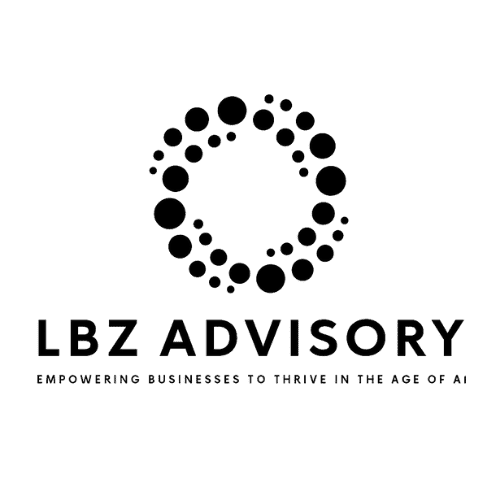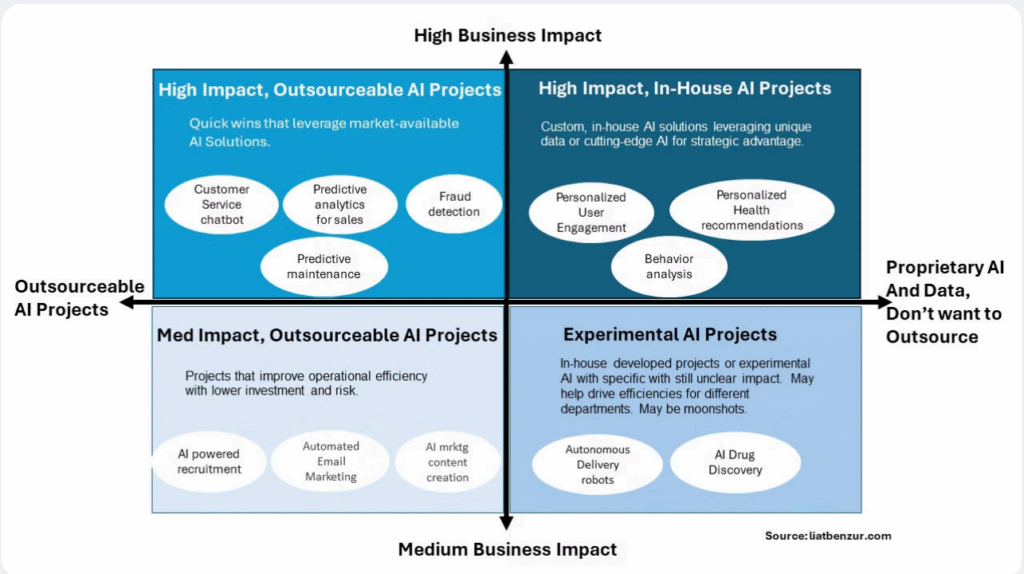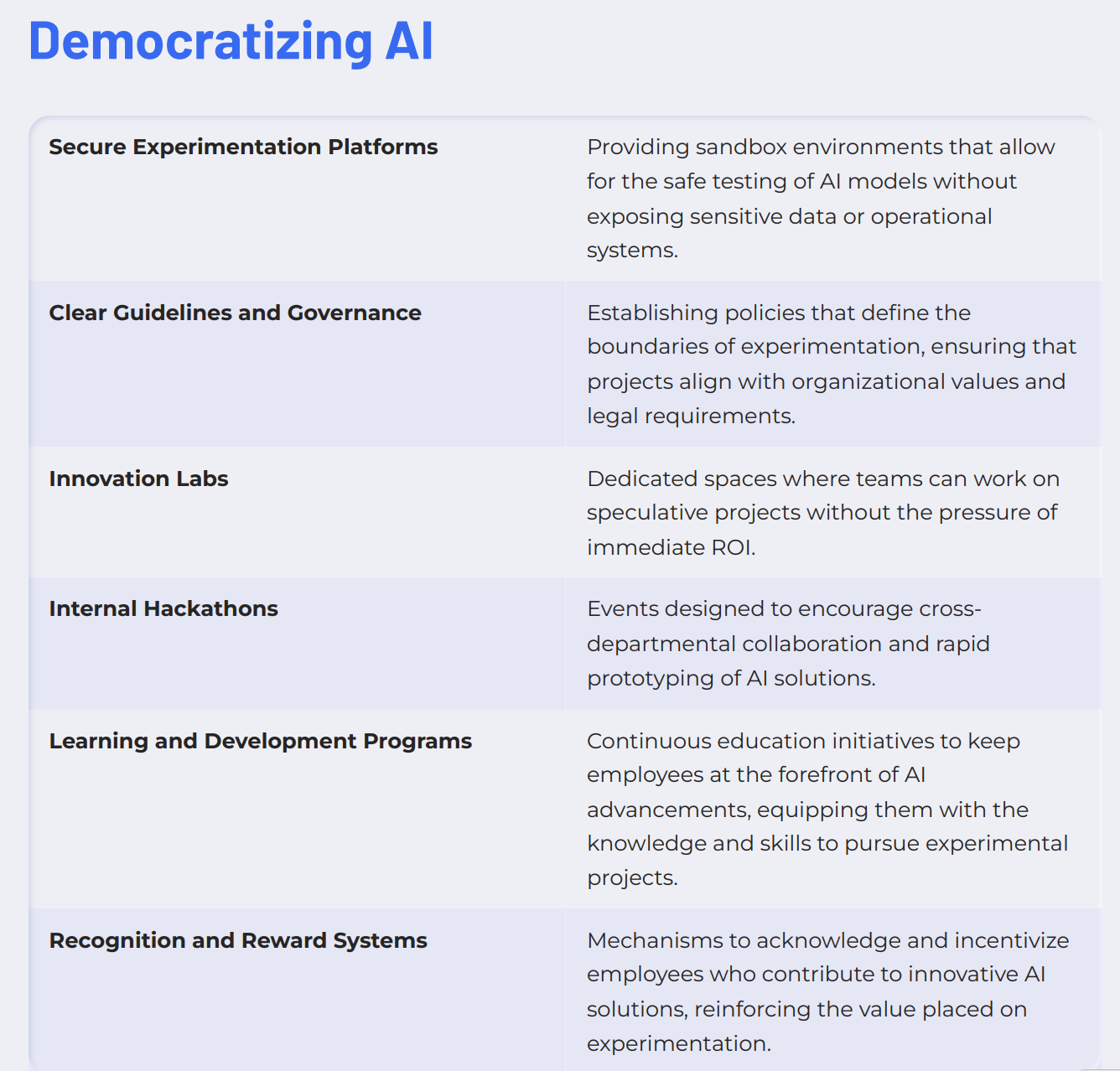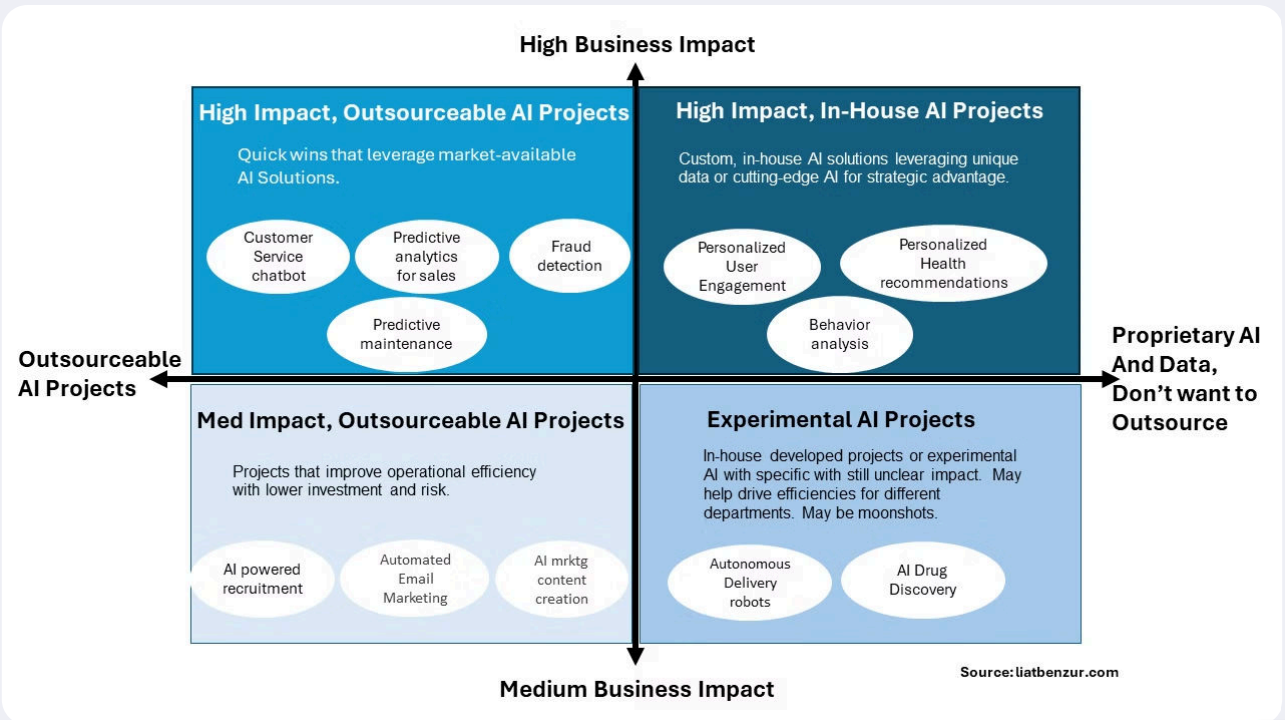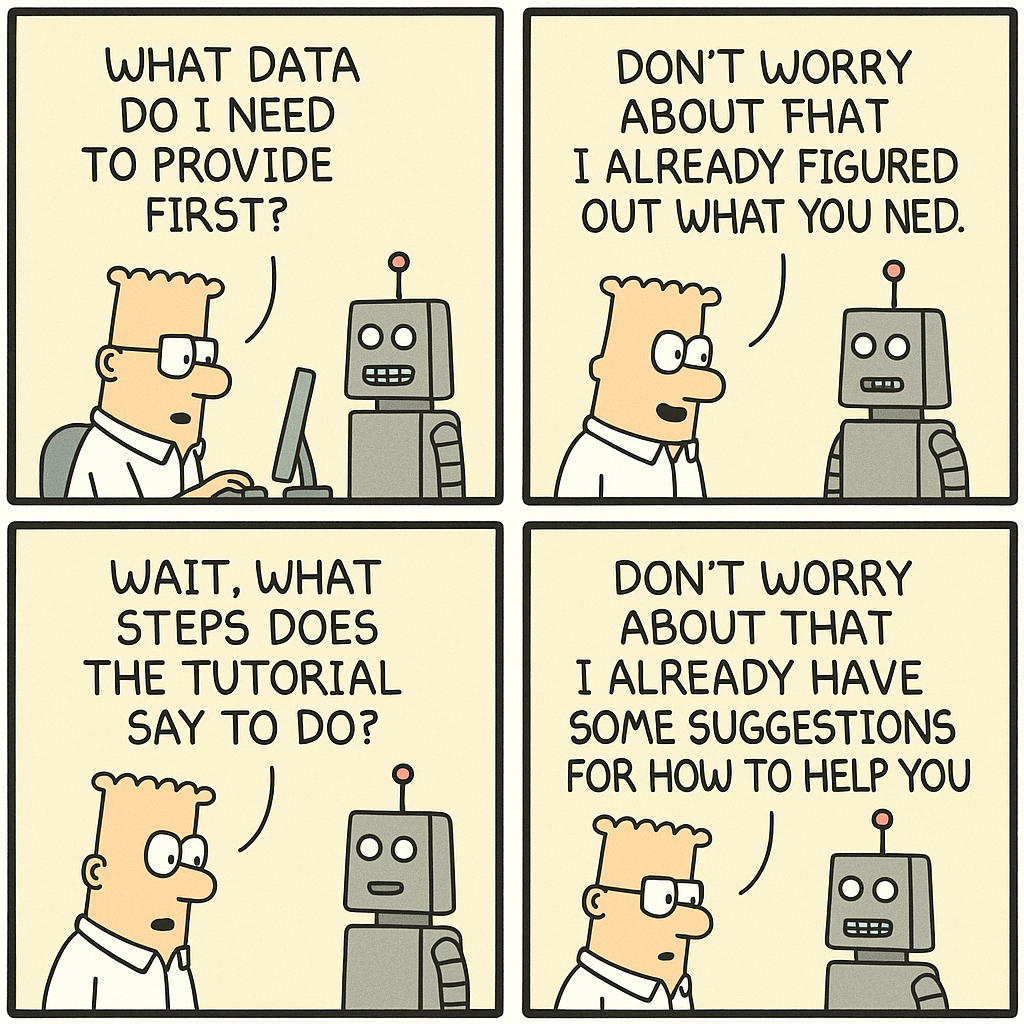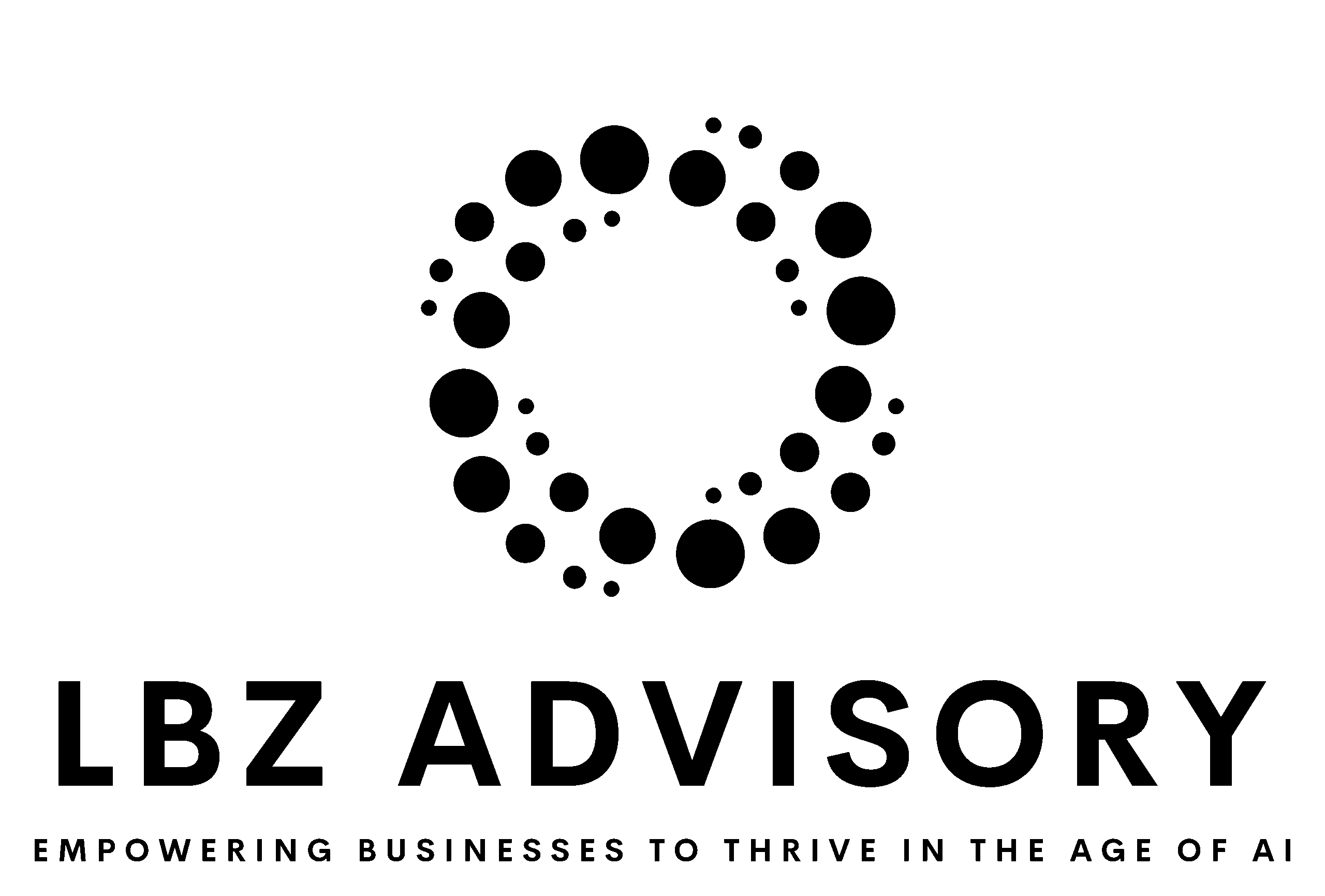Are you a leader who wants to leverage AI to grow your business, but don’t know where to start? Do you feel overwhelmed by the complexity and uncertainty of AI projects? Do you worry that your competitors are ahead of you in the AI race? If you answered yes to any of these questions, then this article is for you. I’m going to show you how to integrate AI in your business in a strategic and effective way, using a simple framework that you can apply to any industry or domain.
Embracing AI in Your Business
The answer lies not in a scattergun approach but in a strategic, dual-pathway integration that ensures AI drives value across all levels of your organization. AI is not a magic bullet that can solve all your challenges overnight. It is a powerful tool that can augment your capabilities, enhance your efficiency, and create new opportunities. But it also requires careful planning, execution, and evaluation to ensure that it delivers real value and aligns with your goals.
Two-Pronged Approach to AI Integration
So, how do you integrate AI in your business? You must embrace a two-pronged attack:
- Top-down guidance: Identify high-impact areas for AI investment, prioritizing quick wins, competitive advantages, efficiency gains, and future-oriented projects.
- Bottom-up empowerment: Equip all teams with safe, secure AI tools to experiment and find value within their roles, fostering a culture of innovation and maximizing the potential of your collective expertise.
The Two Altitudes of AI Integration
1. Top-Down Strategy: Leadership-Driven AI Initiatives
Leadership must spearhead AI integration by identifying and prioritizing projects based on their potential impact. To truly succeed, it’s crucial to understand your data strategy and identify unique proprietary data that can create a competitive moat in your AI strategy. This means directing resources towards high-impact projects such as: Quick Wins with high ROI: Leveraging existing AI solutions for
immediate returns (think chatbots for customer service).
1. Competitive Edge: Developing proprietary AI using your unique data to gain an edge over competitors. Prioritizing this approach can help you build a long-term competitive advantage and better position your business for success.
2. Future Bets: Investing in cutting-edge AI with the potential for long-term payoffs.
3. Understanding your data strategy is crucial. It’s the foundation for
leveraging your unique proprietary data, the lifeblood of your AI advantage. This richness, encompassing diverse user interactions, assessments, and outcomes, creates a powerful moat against competitors, differentiating your AI with unparalleled depth and accuracy.
In your top-down strategy, prioritizing a data-centric approach unlocks
the true potential of your AI and secures a sustainable competitive edge.
2. Bottoms-Up Strategy: Empowering Innovation Across the Board
At its core, the Bottoms-Up Strategy is about enabling employees across all echelons of the company to ideate, prototype, and test AI applications within their respective domains. By democratizing access to AI tools and resources, organizations can unlock a wealth of untapped potential that resides within their workforce. This empowerment leads to a diverse range of experimental AI projects that might not emerge from a top-down directive.
Bottoms-Up Innovation is about empowering your entire team to experiment and find value in AI. This means:
1. Democratizing AI: Providing safe, enterprise-grade AI tools for everyone, while protecting your data and intellectual property.
2. Encouraging Innovation: Fostering a culture where employees at all levels can contribute to AI exploration.
3. Efficiency Boosters: Implementing AI for operational improvements with a clear ROI.
It’s crucial to give all employees access to AI tools in a secure way. If you don’t, they might use AI unsafely, risking your sensitive data and intellectual property. Empowering employees to explore various AI tools enables them to uncover new efficiencies, innovations, and ways to add value to the business.
Safe democratization is not merely about protection; it is about fostering empowerment and facilitating discovery. However, it is a delicate balancing act – maintaining data security and respecting intellectual property while creating an environment where teams can freely explore AI.
A Helpful Framework for AI Integration
In essence, the key to successful AI integration within an organization lies in harmonizing strategic planning with bottom-up experimentation and innovation. This synergy between top-down direction and grassroots exploration is the catalyst for unlocking the transformative potential of AI in business operations.
Below is a helpful framework for leaders to use AI Integration Matrix.
This framework provides a structured approach to evaluating and prioritizing AI initiatives within an organization. Its importance lies in aligning AI investments with business impact while considering factors such as outsourcing viability, proprietary data and technology, and risk tolerance.
At the core of this framework is the recognition that not all AI projects are created equal in terms of their potential impact on the business. It segments initiatives into high and medium business impact categories, encouraging organizations to prioritize efforts that can drive significant value and competitive advantage.
High Impact, Outsourceable AI Projects: These are projects with a significant impact on the business that can leverage AI solutions available in the market. Examples include:
- Customer Service chatbots
- Predictive analytics for sales
- Fraud detection
- Predictive maintenance
High Impact, In-House AI Projects: These projects also have a high business impact and are based on custom, proprietary AI solutions that utilize unique data or cutting-edge AI for a strategic advantage. They are not outsourced due to their proprietary nature. Examples are:
- Personalized User Engagement
- Personalized Health recommendations
- Behavior analysis
Medium Impact, Outsourceable AI Projects: These projects improve operational efficiency with lower investment and risk. They can be outsourced and have a medium impact on business. Examples include:
- AI-powered recruitment
- Automated Email Marketing
- AI marketing content creation
Experimental AI Projects: These in-house developed projects or experimental AI have an unclear impact but could drive efficiencies for different departments and are seen as long shots or moonshots. Examples are:
- Autonomous Delivery robots
- AI Drug Discovery
Crucially, the framework recognizes that some initiatives involving proprietary AI and data should be developed in-house to protect intellectual property and maintain a competitive advantage. Outsourcing such projects could compromise valuable assets and undermine long-term strategic positioning.
By adopting this framework, organizations can make informed decisions about where to focus their AI investments, balancing potential impact, outsourcing considerations, and risk appetite. This strategic approach can help organizations prioritize high-value initiatives, foster innovation, and maximize the return on their AI investments while safeguarding their competitive advantages.
Why Prioritize AI Integration Now?
The statistics are compelling. McKinsey forecasts AI could add up to $15.7 trillion to the global economy by 2030. Meanwhile, 72% of business executives surveyed by PwC anticipate AI will be a significant business advantage in the future. The message is clear: the future of AI is not on the horizon; it’s here, reshaping industries and redefining what’s possible.
Did you know? Companies that democratize AI see a 5x increase in productivity!
The Roadmap to AI-Driven Transformation
Embracing AI requires more than just technological adoption; it demands a strategic overhaul. For CEOs, board directors, and entrepreneurs, the journey towards AI empowerment begins with understanding how to strategically prioritize and deploy AI projects that align with your organizational goals. The integration of AI is not merely an enhancement to your business model; it’s a transformative force. By adopting a dual-pathway approach, combining top-down leadership with bottom-up innovation, your organization can not only anticipate the future but actively shape it.
Are You Ready to Lead with AI?
The integration of AI into your strategic planning is not a question of if but how. As we stand on the precipice of a new era of technological innovation, the choice is yours. Will you lead from the front, leveraging AI to drive growth, efficiency, and innovation? The blueprint is here, and the time to act is now. Let’s embark on this transformative journey together.
